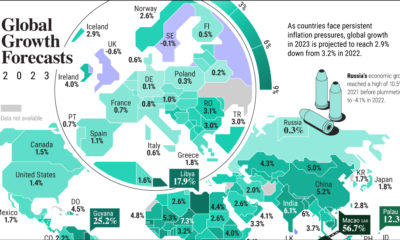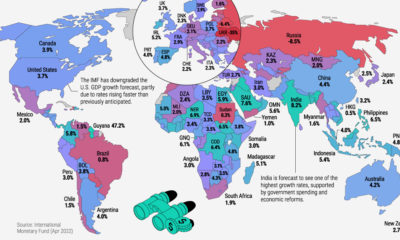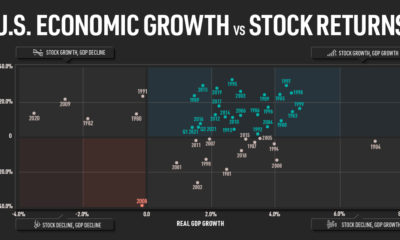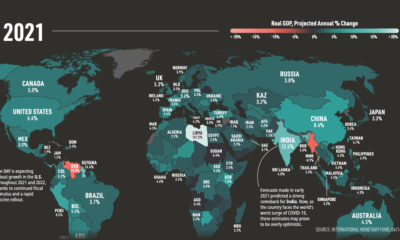This infographic is available as a poster.
A Recap of GDP Growth by Country in 2021
The global economy faced numerous challenges in 2021. While COVID-19 vaccinations became more widely available in some countries, variants led to further waves in the pandemic. While consumer demand began to recover, supply chain disruptions restricted supply.
Despite these and other hurdles, the world economy expanded by 6.1% in 2021. In this Markets in a Minute from New York Life Investments, we explore GDP growth by country to see which countries had the best and worst growth. It’s the first in a two-part series that explores GDP growth around the world.
What is the Base Effect?
Before diving into the data, it’s worth highlighting that 2021’s GDP growth numbers are impacted by the base effect. Whenever growth is shown over a time period, it is being compared to a “base” or starting value. If the base value is abnormally high or low, it can distort the growth figures.
In this case, the year-over-year growth is comparing growth from 2020 to 2021. Since the COVID-19 pandemic caused 2020 GDP growth to be negative in many countries, 2021 GDP growth is measured from a lower starting point. This can make percentage growth appear higher, though in many cases economies were simply recovering from the pandemic slump.
GDP Growth by Country
With this in mind, the table below shows real GDP growth by country in 2021, along with a comparison against 2020’s numbers.
Libya experienced the highest growth rate of 177.3%. The country moved toward ending its decade-long conflict, which resulted in a rebound of oil production and economic activity. Rising oil prices have also contributed to the country’s recovery, given the oil and gas sector accounts for 60% of Libya’s GDP. However, caution should be taken with this figure as there is considerable uncertainty against the backdrop of the civil war.
| Country | 2020 | 2021 |
| Afghanistan | -2.4% | n/a |
| Albania | -3.5% | 8.5% |
| Algeria | -4.9% | 4.0% |
| Andorra | -11.2% | 8.9% |
| Angola | -5.6% | 0.7% |
| Antigua and Barbuda | -20.2% | 4.8% |
| Argentina | -9.9% | 10.2% |
| Armenia | -7.4% | 5.7% |
| Aruba | -22.3% | 16.8% |
| Australia | -2.2% | 4.7% |
| Austria | -6.7% | 4.5% |
| Azerbaijan | -4.3% | 5.6% |
| Bahrain | -4.9% | 2.2% |
| Bangladesh | 3.5% | 5.0% |
| Barbados | -13.7% | 1.4% |
| Belarus | -0.7% | 2.3% |
| Belgium | -5.7% | 6.3% |
| Belize | -16.7% | 9.8% |
| Benin | 3.8% | 6.6% |
| Bhutan | -2.4% | -3.7% |
| Bolivia | -8.7% | 6.1% |
| Bosnia and Herzegovina | -3.1% | 5.8% |
| Botswana | -8.7% | 12.5% |
| Brazil | -3.9% | 4.6% |
| Brunei Darussalam | 1.1% | -0.7% |
| Bulgaria | -4.4% | 4.2% |
| Burkina Faso | 1.9% | 6.9% |
| Burundi | 0.3% | 2.4% |
| Cabo Verde | -14.8% | 6.9% |
| Cambodia | -3.1% | 2.2% |
| Cameroon | 0.5% | 3.5% |
| Canada | -5.2% | 4.6% |
| Central African Republic | 1.0% | 1.0% |
| Chad | -2.2% | -1.1% |
| Chile | -6.1% | 11.7% |
| China | 2.2% | 8.1% |
| Colombia | -7.0% | 10.6% |
| Comoros | -0.3% | 2.2% |
| Costa Rica | -4.1% | 7.6% |
| Côte d'Ivoire | 2.0% | 6.5% |
| Croatia | -8.1% | 10.4% |
| Cyprus | -5.0% | 5.5% |
| Czech Republic | -5.8% | 3.3% |
| Democratic Republic of the Congo | 1.7% | 5.7% |
| Denmark | -2.1% | 4.1% |
| Djibouti | 1.0% | 4.0% |
| Dominica | -11.0% | 3.7% |
| Dominican Republic | -6.7% | 12.3% |
| Ecuador | -7.8% | 4.2% |
| Egypt | 3.6% | 3.3% |
| El Salvador | -7.9% | 10.3% |
| Equatorial Guinea | -4.9% | -3.5% |
| Eritrea | -0.6% | 2.9% |
| Estonia | -3.0% | 8.3% |
| Eswatini | -1.9% | 3.1% |
| Ethiopia | 6.1% | 6.3% |
| Fiji | -15.2% | -4.0% |
| Finland | -2.3% | 3.3% |
| France | -8.0% | 7.0% |
| Gabon | -1.9% | 0.9% |
| Georgia | -6.8% | 10.4% |
| Germany | -4.6% | 2.8% |
| Ghana | 0.4% | 4.2% |
| Greece | -9.0% | 8.3% |
| Grenada | -13.8% | 5.6% |
| Guatemala | -1.5% | 8.0% |
| Guinea | 6.4% | 4.2% |
| Guinea-Bissau | 1.5% | 3.8% |
| Guyana | 43.5% | 19.9% |
| Haiti | -3.3% | -1.8% |
| Honduras | -9.0% | 12.5% |
| Hong Kong SAR | -6.5% | 6.4% |
| Hungary | -4.7% | 7.1% |
| Iceland | -7.1% | 4.3% |
| India | -6.6% | 8.9% |
| Indonesia | -2.1% | 3.7% |
| Iraq | -15.7% | 5.9% |
| Ireland | 5.9% | 13.5% |
| Islamic Republic of Iran | 1.8% | 4.0% |
| Israel | -2.2% | 8.2% |
| Italy | -9.0% | 6.6% |
| Jamaica | -10.0% | 4.4% |
| Japan | -4.5% | 1.6% |
| Jordan | -1.6% | 2.0% |
| Kazakhstan | -2.6% | 4.0% |
| Kenya | -0.3% | 7.2% |
| Kiribati | -0.5% | 1.5% |
| Korea | -0.9% | 4.0% |
| Kosovo | -5.3% | 9.5% |
| Kuwait | -8.9% | 1.3% |
| Kyrgyz Republic | -8.6% | 3.7% |
| Lao P.D.R. | -0.4% | 2.1% |
| Latvia | -3.8% | 4.7% |
| Lebanon | -22.0% | n/a |
| Lesotho | -6.0% | 2.1% |
| Liberia | -3.0% | 4.2% |
| Libya | -59.7% | 177.3% |
| Lithuania | -0.1% | 4.9% |
| Luxembourg | -1.8% | 6.9% |
| Macao SAR | -54.0% | 18.0% |
| Madagascar | -7.1% | 3.5% |
| Malawi | 0.9% | 2.2% |
| Malaysia | -5.6% | 3.1% |
| Maldives | -33.5% | 33.4% |
| Mali | -1.2% | 3.1% |
| Malta | -8.3% | 9.4% |
| Marshall Islands | -2.4% | -1.5% |
| Mauritania | -1.8% | 3.0% |
| Mauritius | -14.9% | 3.9% |
| Mexico | -8.2% | 4.8% |
| Micronesia | -1.8% | -3.2% |
| Moldova | -8.3% | 13.9% |
| Mongolia | -4.6% | 1.4% |
| Montenegro | -15.3% | 12.4% |
| Morocco | -6.3% | 7.2% |
| Mozambique | -1.2% | 2.2% |
| Myanmar | 3.2% | -17.9% |
| Namibia | -8.5% | 0.9% |
| Nauru | 0.7% | 1.6% |
| Nepal | -2.1% | 2.7% |
| Netherlands | -3.8% | 5.0% |
| New Zealand | -2.1% | 5.6% |
| Nicaragua | -2.0% | 10.3% |
| Niger | 3.6% | 1.3% |
| Nigeria | -1.8% | 3.6% |
| North Macedonia | -6.1% | 4.0% |
| Norway | -0.7% | 3.9% |
| Oman | -2.8% | 2.0% |
| Pakistan | -1.0% | 5.6% |
| Palau | -9.7% | -17.1% |
| Panama | -17.9% | 15.3% |
| Papua New Guinea | -3.5% | 1.7% |
| Paraguay | -0.8% | 4.2% |
| Peru | -11.0% | 13.3% |
| Philippines | -9.6% | 5.6% |
| Poland | -2.5% | 5.7% |
| Portugal | -8.4% | 4.9% |
| Puerto Rico | -3.9% | 1.0% |
| Qatar | -3.6% | 1.5% |
| Republic of Congo | -8.1% | -0.2% |
| Romania | -3.7% | 5.9% |
| Russia | -2.7% | 4.7% |
| Rwanda | -3.4% | 10.2% |
| Samoa | -2.6% | -8.1% |
| San Marino | -6.6% | 5.2% |
| São Tomé and Príncipe | 3.0% | 1.8% |
| Saudi Arabia | -4.1% | 3.2% |
| Senegal | 1.3% | 6.1% |
| Serbia | -0.9% | 7.4% |
| Seychelles | -7.7% | 8.0% |
| Sierra Leone | -2.0% | 3.2% |
| Singapore | -4.1% | 7.6% |
| Slovak Republic | -4.4% | 3.0% |
| Slovenia | -4.2% | 8.1% |
| Solomon Islands | -4.3% | -0.2% |
| Somalia | -0.3% | 2.0% |
| South Africa | -6.4% | 4.9% |
| South Sudan | -6.6% | 5.3% |
| Spain | -10.8% | 5.1% |
| Sri Lanka | -3.6% | 3.6% |
| St. Kitts and Nevis | -14.0% | -3.6% |
| St. Lucia | -20.4% | 6.8% |
| St. Vincent and the Grenadines | -5.3% | -0.5% |
| Sudan | -3.6% | 0.5% |
| Suriname | -15.9% | -3.5% |
| Sweden | -2.9% | 4.8% |
| Switzerland | -2.5% | 3.7% |
| Syria | n/a | n/a |
| Taiwan Province of China | 3.4% | 6.3% |
| Tajikistan | 4.4% | 9.2% |
| Tanzania | 4.8% | 4.9% |
| Thailand | -6.2% | 1.6% |
| The Bahamas | -14.5% | 5.6% |
| The Gambia | -0.2% | 5.6% |
| Timor-Leste | -8.6% | 1.8% |
| Togo | 1.8% | 5.1% |
| Tonga | 0.7% | -0.7% |
| Trinidad and Tobago | -7.4% | -1.0% |
| Tunisia | -9.3% | 3.1% |
| Turkey | 1.8% | 11.0% |
| Turkmenistan | -3.0% | 4.9% |
| Tuvalu | 1.0% | 2.5% |
| Uganda | -1.4% | 5.1% |
| Ukraine | -3.8% | 3.4% |
| United Arab Emirates | -6.1% | 2.3% |
| United Kingdom | -9.3% | 7.4% |
| United States | -3.4% | 5.7% |
| Uruguay | -6.1% | 4.4% |
| Uzbekistan | 1.9% | 7.4% |
| Vanuatu | -5.4% | 0.5% |
| Venezuela | -30.0% | -1.5% |
| Vietnam | 2.9% | 2.6% |
| West Bank and Gaza | -11.3% | 6.0% |
| Yemen | -8.5% | -2.0% |
| Zambia | -2.8% | 4.3% |
| Zimbabwe | -5.3% | 6.3% |
Ireland experienced GDP growth of 13.5% in 2021, driven largely by record-high exports. The country is home to more than 1,500 multinationals, including some of the top tech and pharma companies, due to Ireland’s competitive tax rate. The size of some of these multinationals can result in bloated GDP figures.
In South America, Chile had one of the highest GDP growth rates of 11.7%. The economic recovery was driven by one of the fastest COVID-19 vaccine rollouts in the world, which allowed the economy to almost fully reopen. Household consumption also rose thanks to fiscal support from the government and people withdrawing money from their pensions.
Meanwhile U.S. economic growth was roughly on par with the global average at 5.7%. The reasons for growth were widespread, including an increase in consumer spending, business investment, exports, and new single family home construction.
Looking Ahead
Recovering from the pandemic shutdown, almost all countries saw positive GDP growth in 2021. Some of the strongest growth was seen in countries with fully reopened economies, in-demand exports, and strong fiscal and monetary support.
Now, the world faces a new host of issues including worsening inflation and the Russia-Ukraine war. Which countries are projected to fare the best amid these challenges?
In the second part of this series, we’ll dive into predictions for GDP growth by country in 2022 and beyond.


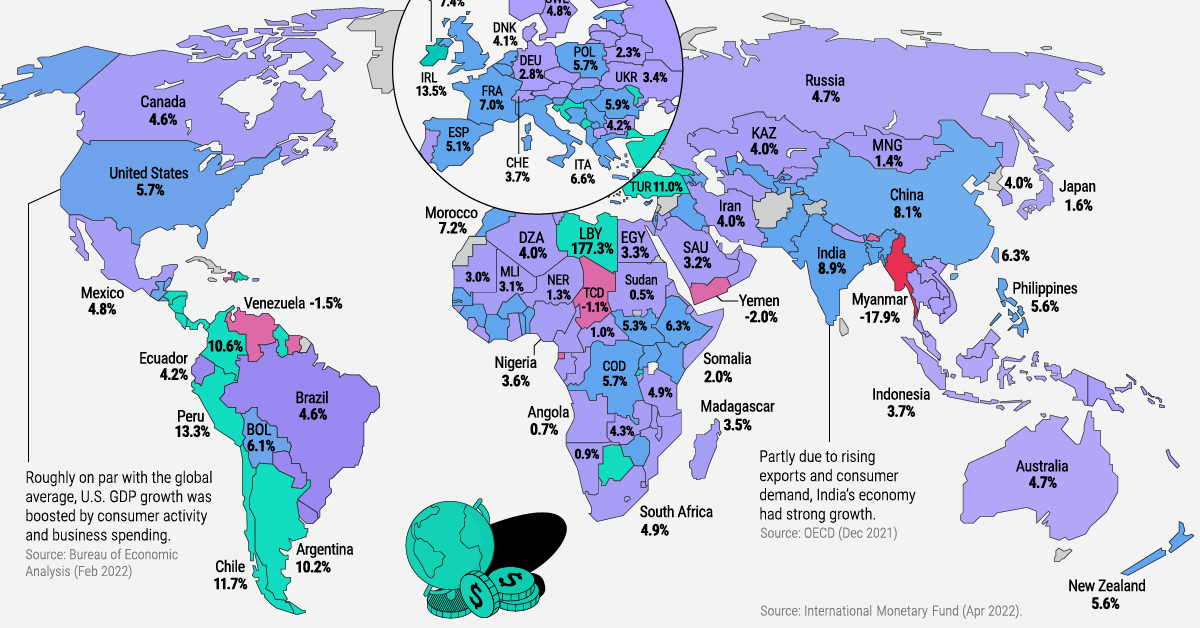
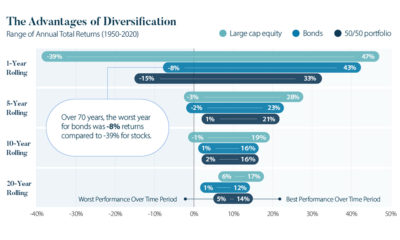
 Infographics2 years ago
Infographics2 years ago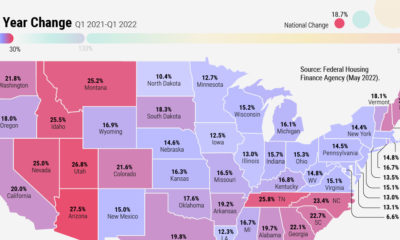
 Markets in a Minute2 years ago
Markets in a Minute2 years ago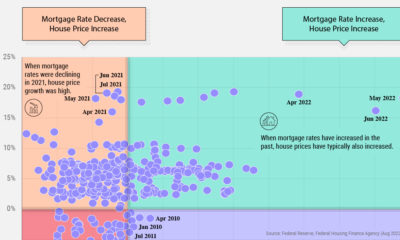
 Markets in a Minute2 years ago
Markets in a Minute2 years ago
 Infographics2 years ago
Infographics2 years ago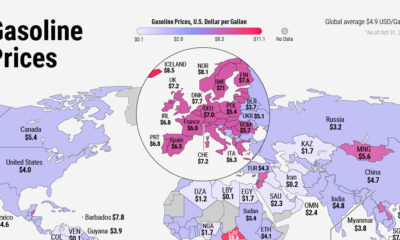
 Markets in a Minute1 year ago
Markets in a Minute1 year ago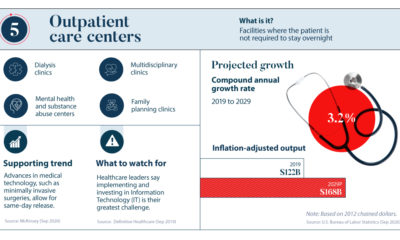
 Infographics3 years ago
Infographics3 years ago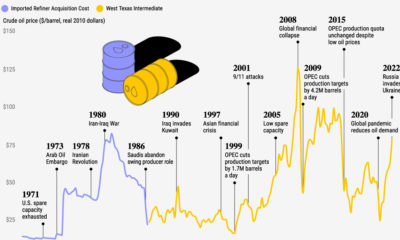
 Markets in a Minute2 years ago
Markets in a Minute2 years ago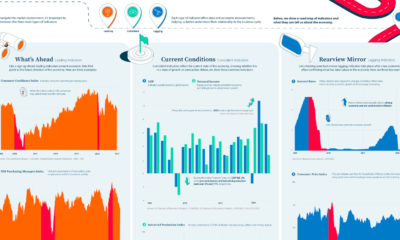
 Infographics1 year ago
Infographics1 year ago





